Mars Observing Program Coordinator:Mark Simonson |
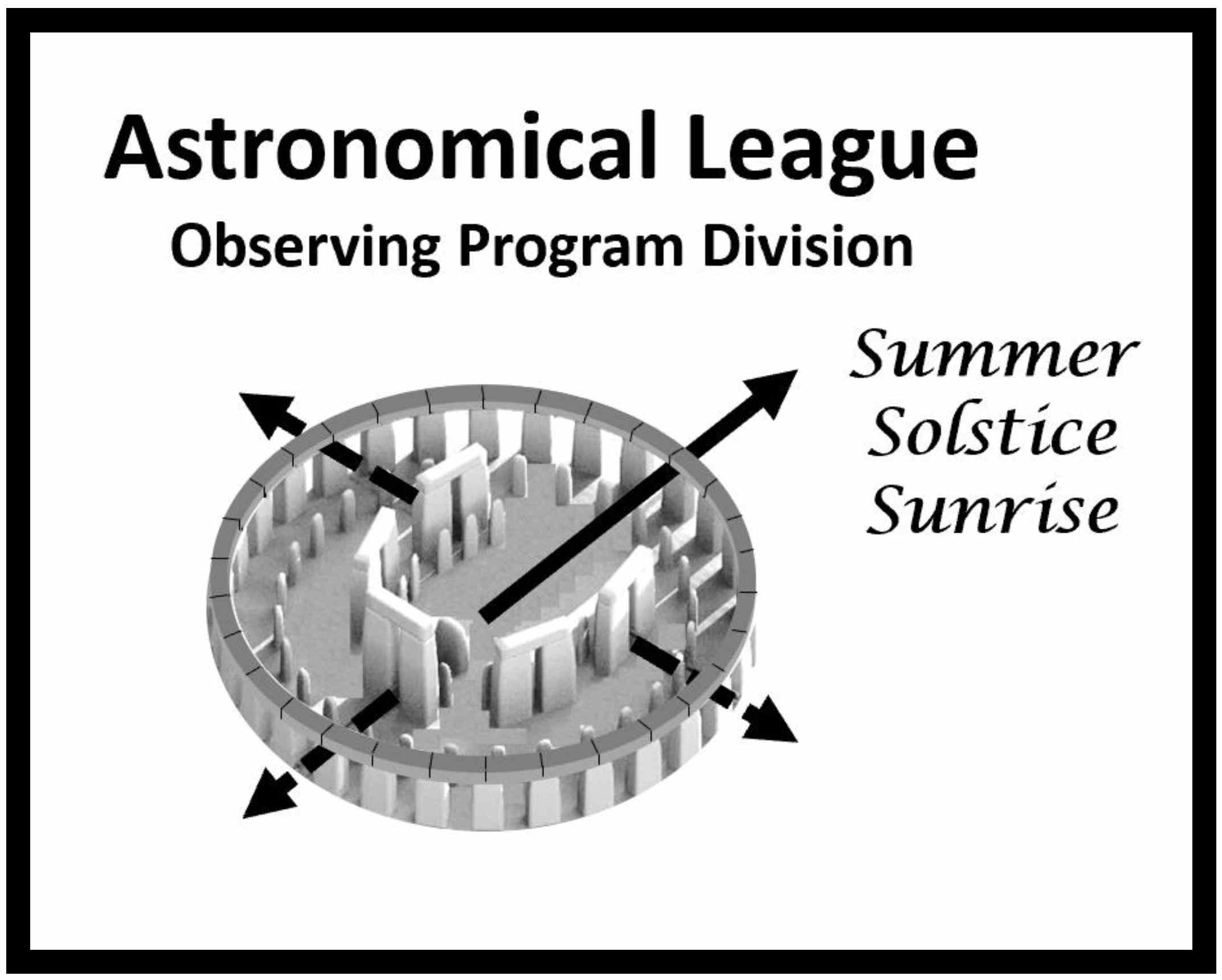 |
Introduction
Welcome to the Mars Observing Program of the Astronomical League. Participation in this program will enhance your observing skills, and upon its completion, you will have contributed scientific observations which will be available to those who can use them for scientific analysis. Mars is fascinating to observe, and the sense of personal accomplishment in observing it can be great.
| Although NASA space probes have uncovered a great deal of information about Mars, many uncertainties still exist regarding the visible phenomena of the Martian surface and atmosphere. For example, why do the maria appear to darken when the polar caps melt? What causes the mysterious “blue clearing”? Are there identifiable atmospheric phenomena that lead to the development of dust storms? What is causing the slow, year-to-year changes in the dark albedo features? Spacecraft thus far have provided little additional knowledge of these phenomena, and have even found new Martian mysteries. Our desire to study the Red Planet is enhanced rather than diminished by the findings of spacecraft.
About every 2 years and 50 days, Mars comes into opposition with the Earth. Due to the eccentricity of Mars’s orbit, there is much variation in the apparent size of Mars from one opposition to the next. The closest oppositions occur in a cycle of about 16 years. At closest approach in 2003, Mars appeared the largest in recorded history, reaching a diameter of more than 25 arc seconds. In contrast, the unfavorable oppositions of 2010 and 2012 yielded maximum apparent diameters of only about 14 arc seconds. Observers have long considered an apparent size of 6 arc seconds or larger to allow useful observations of the planet. This size constraint typically allows about 5 months of good observing before opposition and an equal length of time after opposition. This 10-month period is when we can observe its surface, its atmospheric clouds and hazes, and its brilliant white polar caps. |
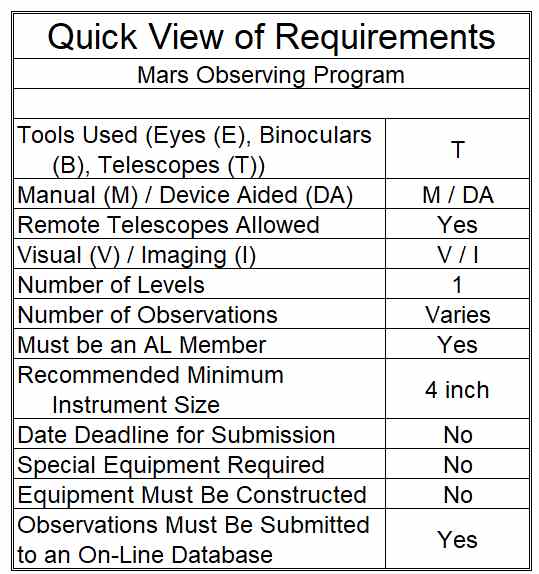 |
The period from one opposition to the next is called an apparition, and the apparition is usually named by the year in which the opposition occurs. For example, the “2018 apparition” lasts from July 2017 to September 2019.
Although one might naturally think that the closest apparitions are the most interesting ones to observe, many long-time observers find that the more distant apparitions are more interesting. This preference is due to two things. First, during more distant apparitions, Mars stays at a northern declination during the best observing months, while during the close apparitions, the best months occur when Mars is far south of the celestial equator and low in the sky for Earthlings in the Northern Hemisphere. Second, Mars exhibits more cloud features during the more distant parts of its orbit, so it is more interesting to monitor. So, do not allow the closeness of the apparition determine whether you will observe Mars.
Background Information
Oppositions of Mars:
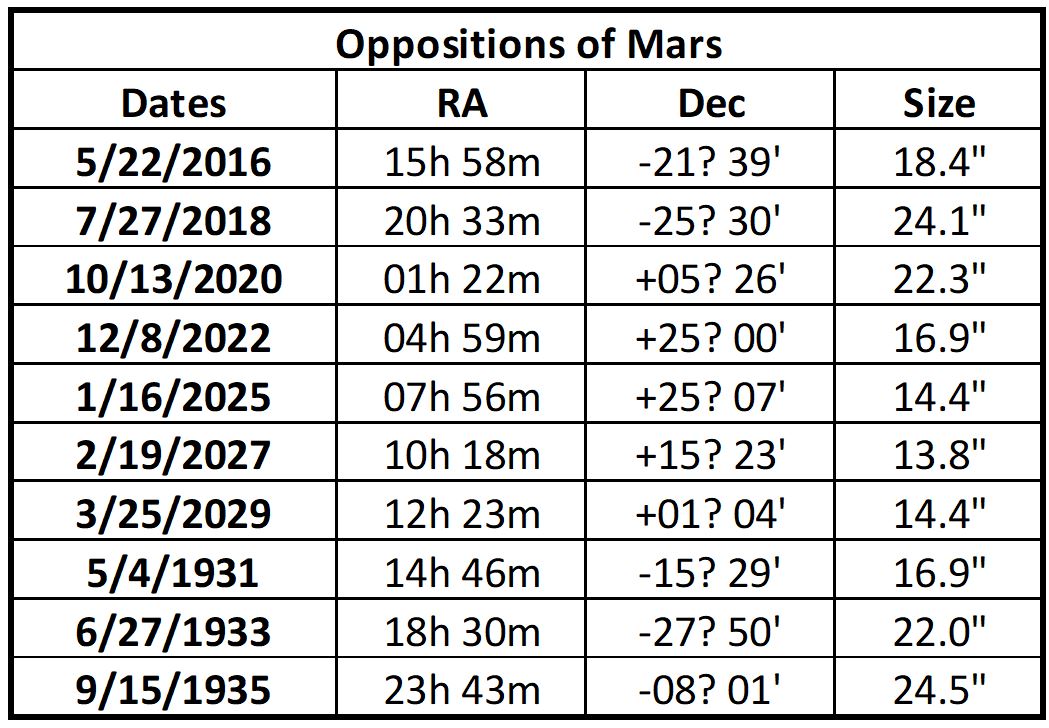
Requirements and Rules
Requirements:
Mars invites everyone to study it, but to receive this observing award you must be a member of the Astronomical League, either through membership in an affiliated astronomical society or a Member-at-Large.
Observations that an amateur astronomer can do are needed in order to improve our understanding of Mars. By completing these award requirements, an astronomer will have contributed meaningfully to the ongoing monitoring of the Red Planet in which the A.L.P.O. is involved. To satisfy the requirements of this Observing Program, participants must make observations spread among each of these three areas of study:
- Studies of the Martian Polar Regions and the two polar caps,
- Examining Martian atmospheric phenomena: clouds and dust storms and blue clearing, and
- Observation of the major albedo features at all longitudes.
Detailed requirements under each area of study are specified in the Observing Requirements document. Randomly timed observations are likely to be quite inefficient in completing the requirements for the award. The observer should study the apparition before it begins or early in its course, and plan a series of observations by which the requirements can be met.
For example, the shrinkage of either polar cap over a number of months might be missed if one does not plan to observe during the part of the apparition during which it occurs. The side of Mars facing you will be displayed in a number of different planetarium (star chart) programs for your computer or smartphone. Alternatively, you can use the “Mars Profiler” on the Sky & Telescope website: from the home page, click on “OBSERVING” in the heading, and in the drop-down list choose “INTERACTIVE TOOLS.” In the resulting detailed menu, scroll down until you find “Mars Profiler.” Or, just go to: http://www.skyandtelescope.com/observing/interactive-sky-watching-tools/mars-which-side-is-visible/.
The Observing Program may be achieved in a single apparition, but this is not required. The observations of the shrinkage of a polar cap must be completed in a single apparition. Observations extending into a second apparition can be accepted, provided that the polar cap observations are in a single apparition. The Astronomical League’s Mars Observing Program Coordinator will have final authority in determining whether an observer’s submissions are sufficient for him or her to receive the certification.
“Negative observations” are valuable — but the observer will be required to document negative observations in the same fashion that he documents positive observations of each phenomenon for which he is looking (e.g., clouds, dust storms, blue clearing). These can be combined with observations of albedo features and polar caps so that the observer will not feel that he or she is wasting time by making repeatedly negative observations. It is expected that an observer will include on the same report form his observations of such features as polar caps, clouds, albedo features, and blue clearing, all of which might be observed on a single night.
The Awards: The Observing Program offers two versions: a visual option and an imaging option. You must meet all of the requirements as outlined on the requirements page. A certificate and pin are awarded to those completing the requirements of the Observing Program and it will indicate the option done.
Rules:This certification is available to members of the Astronomical League, either through their local astronomical society or as members at large. If you are not a member and would like to become one, check with your local astronomical society, search for a local society on the Astronomical League Website, or join as a Member-at-Large. Remote telescopes may be used for this Observing Program as long as the submitter is responsible for directing the telescope. Participants are required to record their observations, including sketches, on the observing form used by the Mars Section of the Association of Lunar and Planetary Observers (A.L.P.O.) or equivalent. These completed forms should be scanned or copied. Resources to help you complete the Observing Forms are:
|
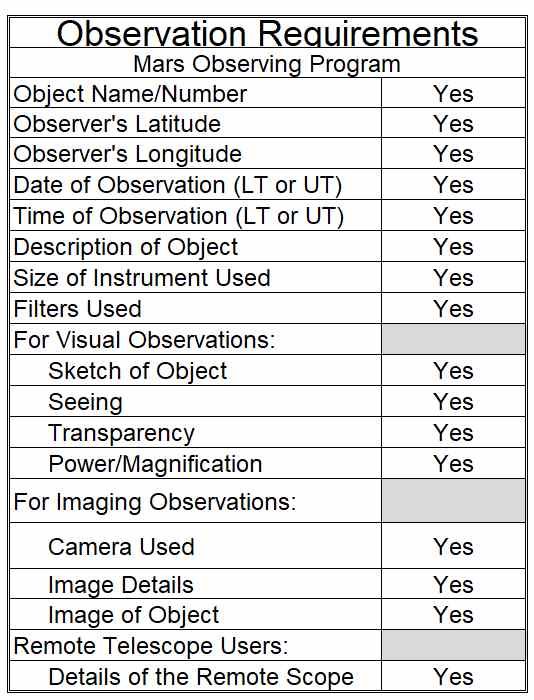 |
Submitting for Certification
After you have completed the required observations they should be scanned or copied. The copies should be sent to the Coordinator of the Mars Section of A.L.P.O. as well as the Astronomical League Mars Observing Program Coordinator. Do NOT send the original logs, they will not be returned. The certificate and pin will be sent once the information is verified.
The submission should include a completed Submission Form – in PDF Version, and in MS Word Version.
A.L.P.O. Mars Section Coordinator:Roger Venable |
 |
Mars Observing Program Coordinator:
Mark Simonson
1519 Ridge Drive
Camano Island, WA 98282
(360) 387-9548
E-mail: marknilse@yahoo.co
Upon verification of your submission and of your active membership in the Astronomical League, your recognition (certificate, pin, etc.) will be sent to you or to the awards coordinator for your society, as you specified. Your name will also appear in an upcoming issue of the Reflector magazine and in the Astronomical League’s online database. Congratulations. Good luck with your next observing challenge.
Notes:
- Acknowledgement: The Astronomical League would like to recognize Roger Venable, the Coordinator of the Mars Section of the A. L. P. O. This certification, its detailed information, and well-thought-out requirements are the result of his dedication and effort. Thank you Roger for your help.
- One of our members, Robert Brayton, has assembled a Mars map that he has graciously agreed to provide to folks who are pursuing the Mars Observing Program. If you have any questions or comments or would like to purchase a high-resolution copy, please contact Rob at marsmap@texasstarcave.com. To get the free copy click here.
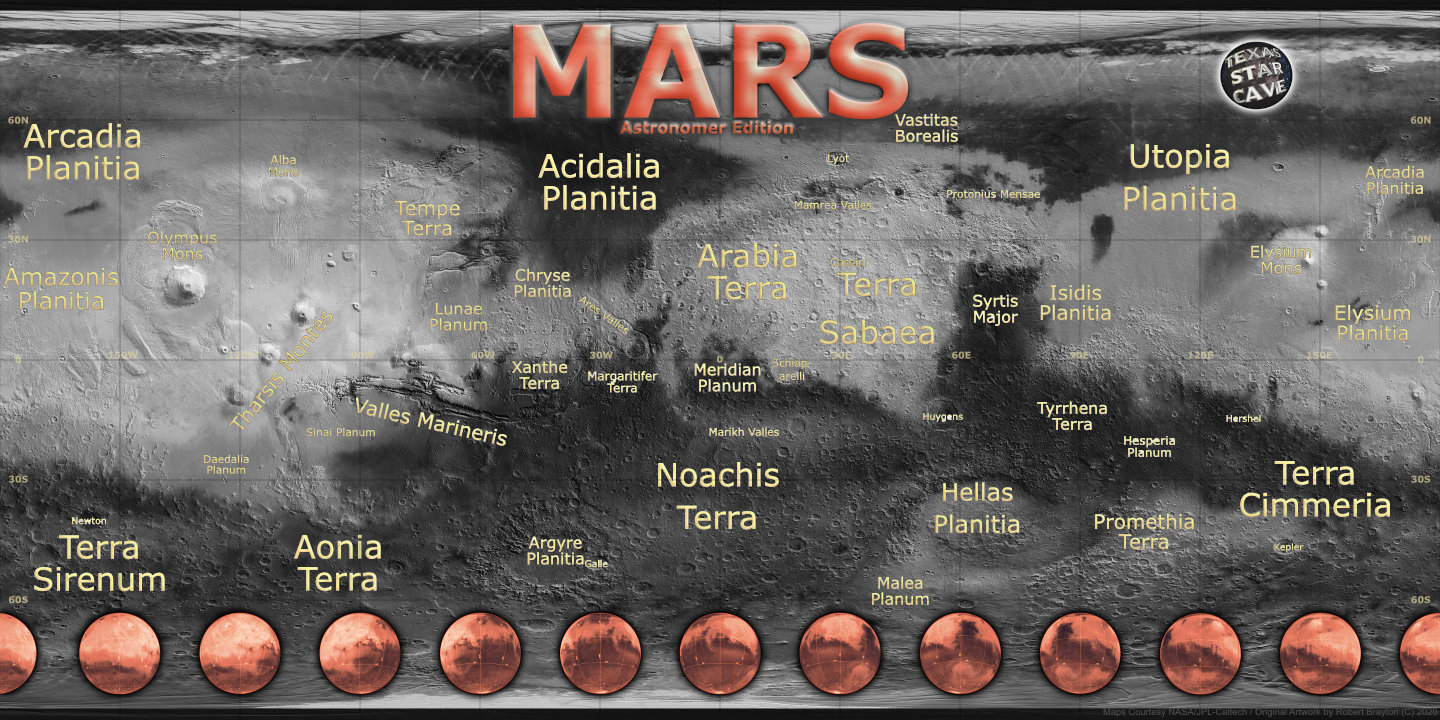
Looking for more Information and Opportunities?
- The Astronomical League Web Store has a great manual available with information for this Observing Program. It is available here.
Links:
- A.L.P.O. Mars Section web page.
- Submission Form – in PDF Version, and in MS Word Version.
- List of Requirements – in PDF Version, and as a checklist in an MS Excel Version or a PDF Version.
- A Blank Observing Form – in PDF Version, and in MS Word Version,
- A Sample ALPO Observing Form.
- Directions for completing the Observing Form.
- Find your Observing Program Award



